by Ashley McElhenie, SPP Prairie Conservation Nursery Technician. Ms. McElhenie created this in response to a call for writing on “science in prison.”
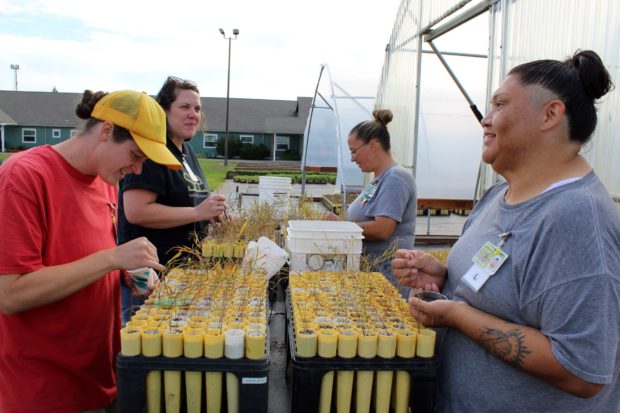
I first heard about the prairie conservation crew from my roommate’s friend. She and the other women on the crew were going to be released in a couple of months and they wanted to find hard-working, nice individuals to take their places. I guess I just so happened to meet the criteria, and did not like my job at the time so I gladly jumped at the opportunity. Not only was it not in the kitchen, but it was summertime and I’d be working outside all day. I could work on my tan and probably lose some weight — there was no downside to this new job.
Violets
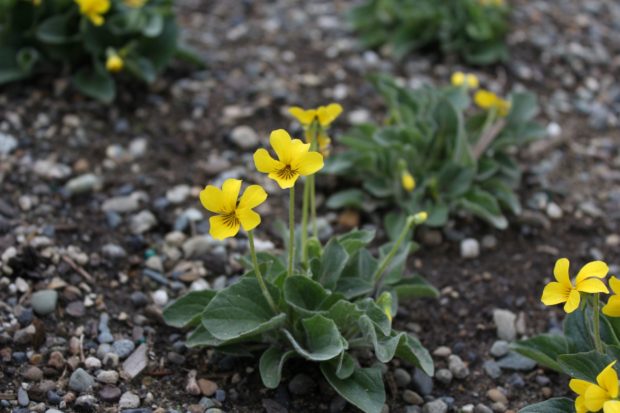
Viola praemorsa is one of two violets grown for seed production at the Washington Corrections Center for Women (WCCW). Due to its bright yellow flowers it is also known as the canary violet. Photo by Jacob Meyers.
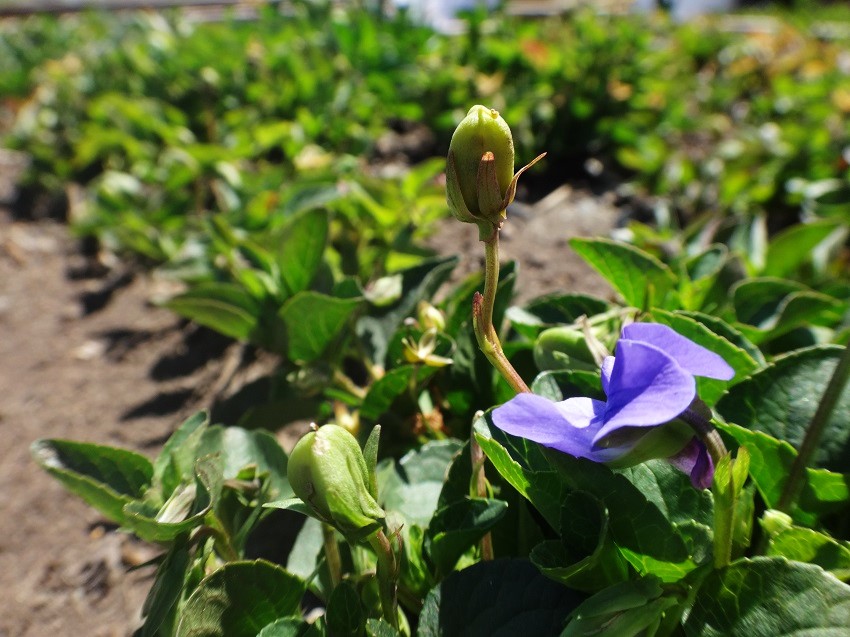
My first day I remember transplanting numerous Viola adunca into rows of beds. They were a pretty purple flower that did something for a butterfly species but that’s all I knew. As time went on, we began learning a little more about the violets and what our purpose was for growing these endangered native plants. It was kind of cool thinking I’m restoring areas of these native plants, being a Washington native myself, but that was about the extent of my interest.
It wasn’t long before I started going out to the Viola praemorsa beds on weekend mornings. I took a particular interest in these violas because they had a large seed pod with seeds that varied from a golden color to a deep brownish purple color. With a cup of coffee in hand and music player in my pocket, I’d spend hours tending to the beds and harvesting seed pods. The only problem with these seed pods is if you wait too long, they open up and shoot seed everywhere.
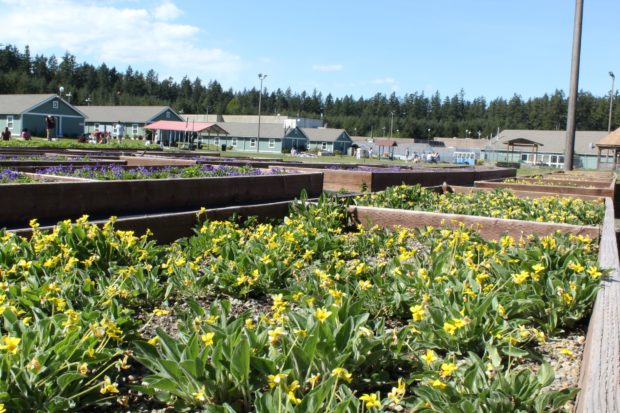
Viola praemorsa is less common than its bluish-purple cousin. This violet is only found in western North American oak savannahs and oak woodlands. Photo by Jacob Meyers.
It became a ritual to me. Each day was like a scavenger hunt looking for these seeds before they exploded and we lost our product. Because of the exploding seed pods, the Viola praemorsa would often end up in the Viola adunca beds and vice versa. I began to notice the differences between the two plants and after a while could easily identify which plant was a “weed” in the other’s bed. I was surprised to find out how different two plants from the same family could be; the Viola praemorsa with its single, fuzzy lead sprout or the Viola adunca with its clustered, small leaf bunch. Being in the violet beds became a refuge from the crazy living units.
Oaks
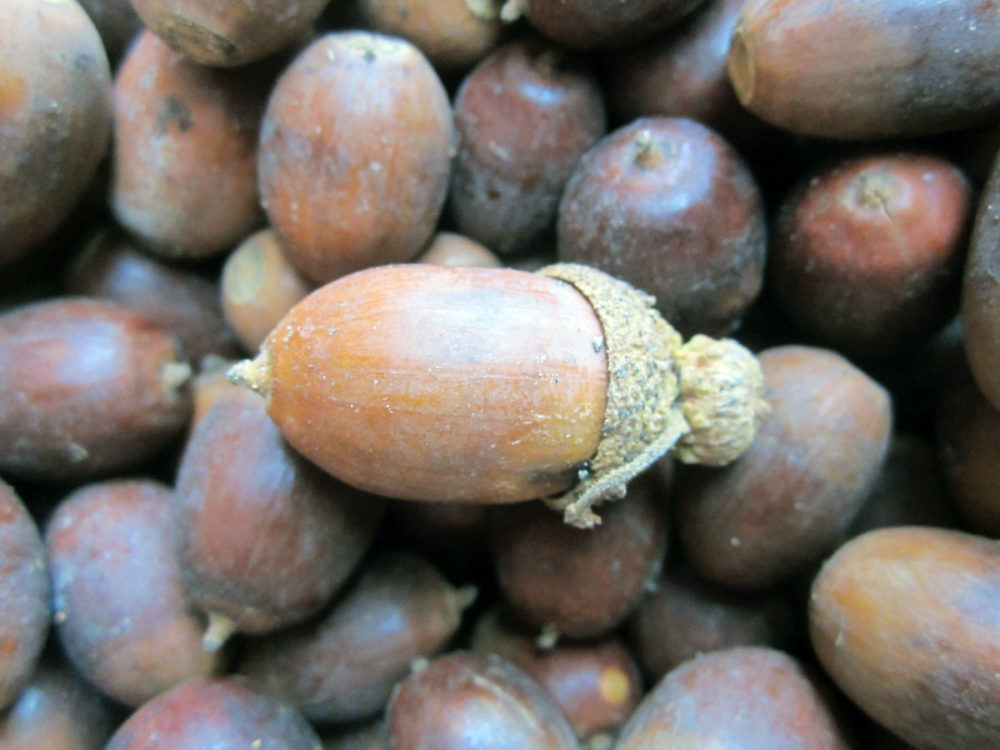
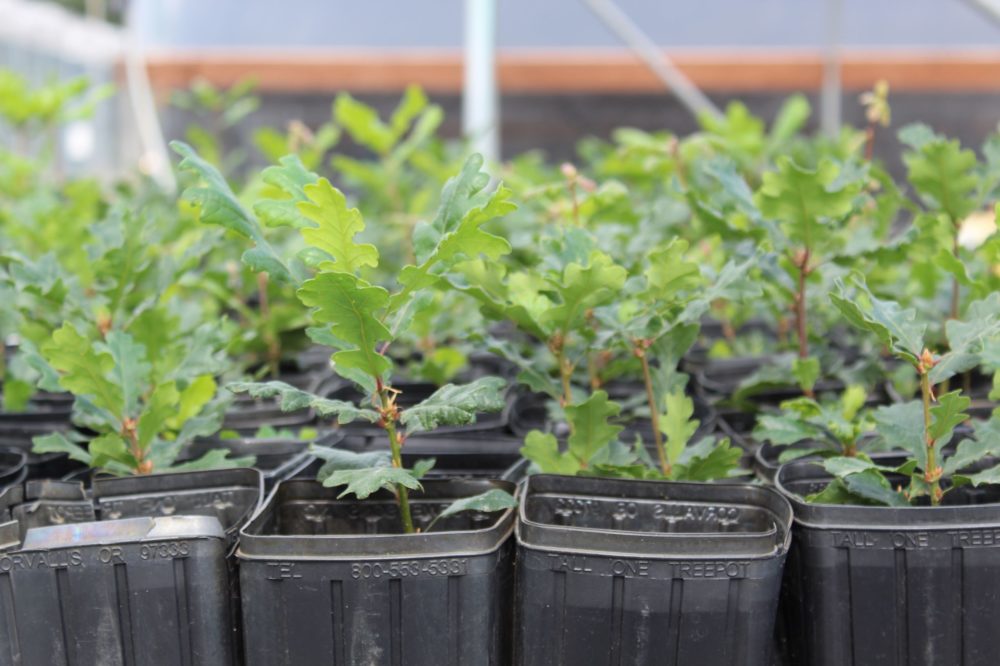
When I learned we were going to plant Garry oak trees (Quercus garryana) working on the conservation nursery crew became even more personal for me. The island on which I was raised has a lot of oak trees. Prior to my incarceration, there was a bit of backlash when the city wanted to remove the oldest and probably most notable oak tree in town. The tree’s roots had long been affecting a nearby road, but I didn’t want the oak to be cut down. It was a beautiful old tree that was a block away from the heart of downtown. It was a tree memorable from my childhood, the old oak by the post office. Despite the locals protesting, the tree was eventually cut down. A giant stump was left behind. Not only was it an eyesore, but a constant reminder of what is now gone. To my knowledge, the road has yet to be fixed and my town lost some of its history.
In the nursery, I felt that I could honor that oak’s memory, in a way, by planting 50 or more oaks that would live throughout the South Sound area. Being a part of that was small personal victory for me. I wanted to learn all I could about them.
Learning more
In the wintertime there is less manual labor to do so we focus on learning about the native plants with which we work. We learn how to identify these plants, the type of soil composition specific to our area and plants, the species that these plants affect, and how those species benefit from the plants. It was all so fascinating. I had never thought about plants as something more than food or landscape. It was rather humbling to be aware of this entire other system in which I was completely oblivious to.
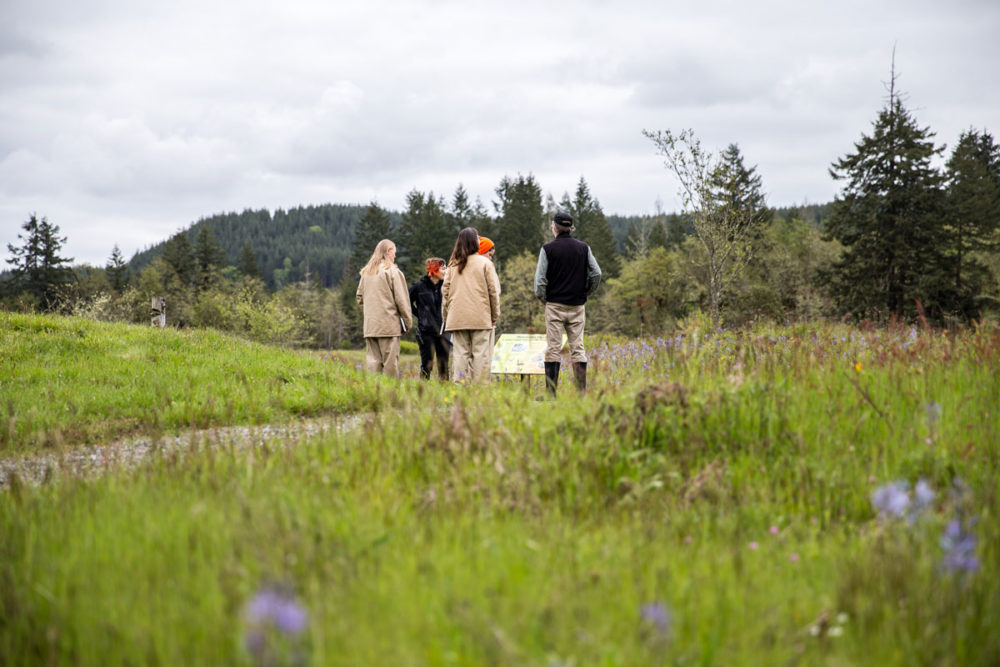
The following spring, I was fortunate enough to be given the opportunity to visit a prairie in where my work had been transplanted while still incarcerated. It was absolutely beautiful. The way all these native plants cohabited with one another in an seemingly untouched landscape of green, speckled with colors of blue, orange, yellow, and white as far as I could see. I don’t think I had ever appreciated nature more than I had that day. And it was an especially proud moment knowing that the plants I had grown were contributing to the landscape. During that day I remember drawing a weird parallel, that the restoration work I had been doing in the South Sound prairies was restoring me. I had been replanted, sprouted, grown, and was soon to be released into society.

I can’t take full credit, though. The people who I’ve worked alongside have been some of the best people I’ve met in years. The people I worked most closely with on the prairie conservation crew treated me as an equal, despite being incarcerated. They had faith and believed in me. Over time, I started to have faith and believe in myself. This program has taught me more than I could have ever imagined, and which goes way beyond knowledge of prairie plants. It’s taught me more about myself and things I am capable of. While learning about prairies, I was able to rediscover the values and principles I had prior to my incarceration.
For so many years I was so focused on destructive behaviors, whether it was my own or others’. Working with endangered plants gave me a different way to channel that energy. I was able to do productive activities that benefited people, animals, and plants. It gave me a sense of worth knowing that what I was doing made an impact on so many levels. No matter how small that impact may be, I knew it was a positive one.
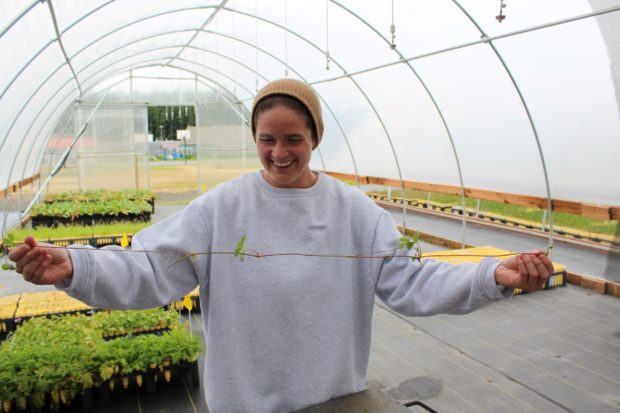
Pictured here, Ashley is showing off the impressive runners of another important prairie plant — wild strawberry (Frageria virginiana). As Ashley moves closer to her December release date, she is all smiles. Photo by Jacob Meyers.




















